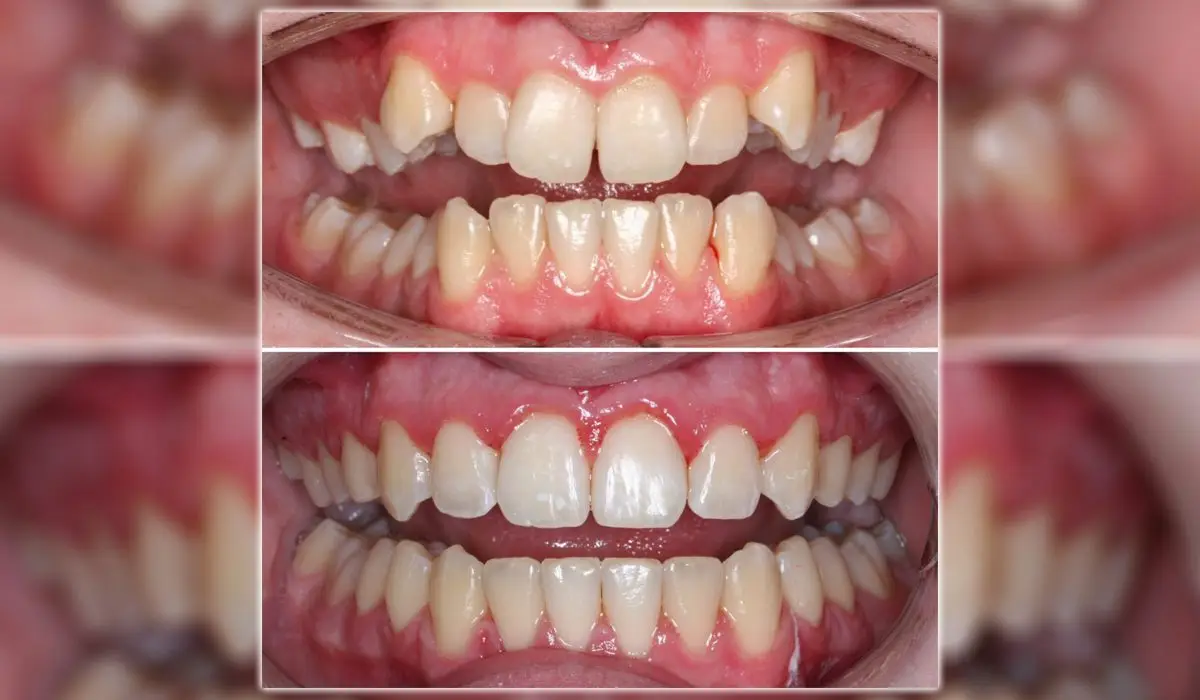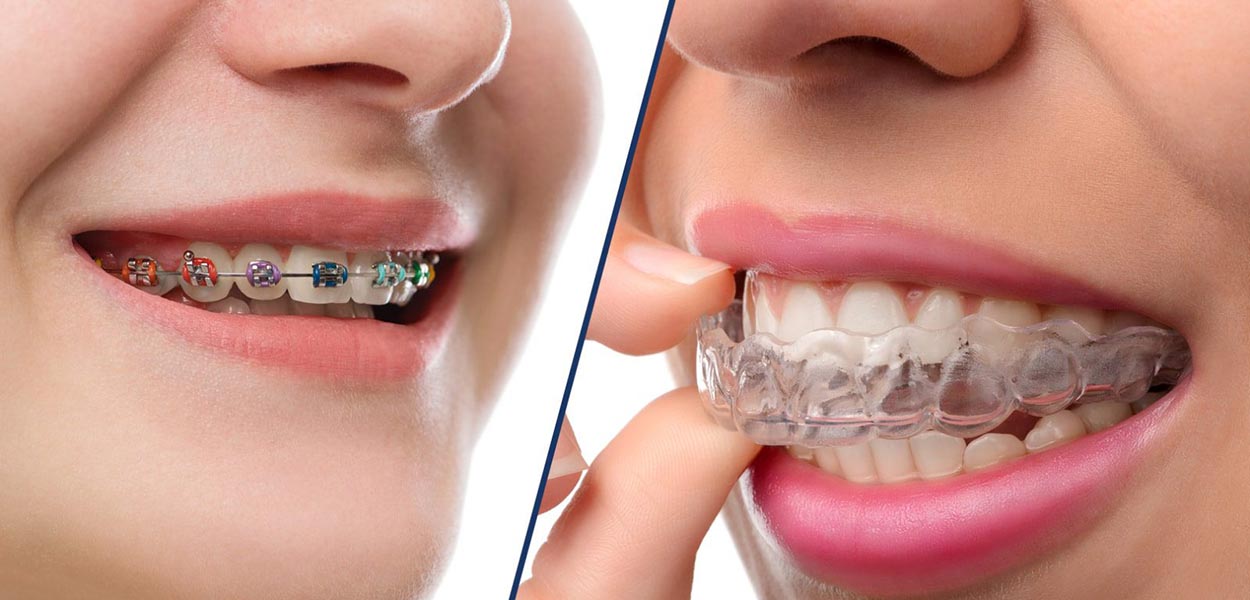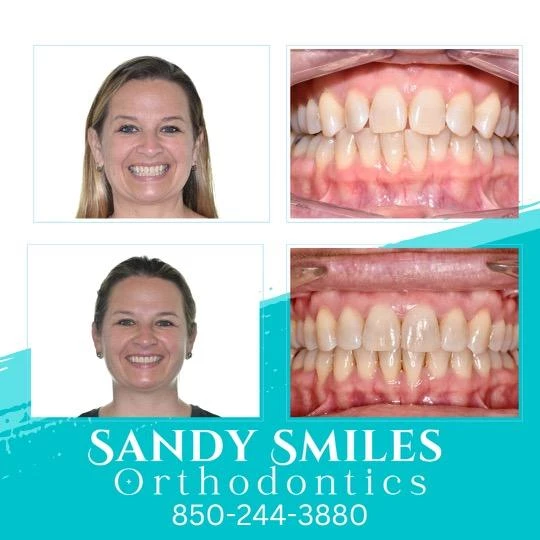The Price of Invisalign: Comprehending the Investment in Your Smile
The Price of Invisalign: Comprehending the Investment in Your Smile
Blog Article
Invisalign vs. Conventional Dental braces: Which Choice Is Right for You?
When taking into consideration orthodontic treatment, the option in between Invisalign and traditional dental braces provides numerous important variables that warrant mindful analysis. Invisalign uses a very discreet alternative with detachable aligners, while typical braces supply an extra visible yet efficient remedy for extreme imbalance.
Overview of Therapy Choices

In comparison, conventional dental braces are composed of steel brackets and cords that are bonded to the teeth. This approach uses constant pressure in time to achieve placement. While efficient for complex orthodontic issues, conventional braces need routine visits for adjustments and can position difficulties in keeping oral hygiene as a result of the problem of cleansing around cables and braces.
Both alternatives have their values, and the option usually hinges on certain oral problems, lifestyle preferences, and individual conformity. Ultimately, seeking advice from an orthodontic professional is important for establishing one of the most ideal treatment strategy customized to private demands. Recognizing the subtleties of each alternative can substantially affect the general success of orthodontic therapy.
Aesthetic Considerations
A considerable element influencing the choice in between Invisalign and typical braces is the aesthetic charm each treatment provides. Invisalign aligners are crafted from clear plastic, making them practically invisible when used.
On the other hand, standard dental braces contain steel braces and cables, which can be much more recognizable. While advancements in orthodontic modern technology have actually brought about the development of smaller brackets and tinted elastics, traditional braces still keep a more conspicuous profile. For some individuals, the visibility of dental braces may discourage them from looking for required treatment.
Eventually, the choice between Invisalign and typical braces might rest on personal choices concerning aesthetic appeals. Clients who prioritize discretion usually favor Invisalign, while those who are less worried concerning visibility might select typical braces. Understanding the visual implications of each option is vital for making a notified choice that straightens with one's lifestyle and choices.
Convenience and Convenience

In regards to comfort, Invisalign aligners are detachable, allowing people to enjoy their favorite foods without restriction and keep optimum oral hygiene. Brushing and flossing are simplified, as the aligners can be taken out throughout these routines, whereas see here now conventional braces require mindful maneuvering around cables and braces.
Furthermore, Invisalign's modern system enables fewer orthodontic gos to. Individuals usually receive multiple collections of aligners at as soon as, which can streamline the treatment process and reduce time spent in the orthodontist's chair. In contrast, traditional dental braces require regular modifications, making them much less convenient for those with active timetables. Invisalign. Generally, the comfort and convenience of Invisalign make it an appealing option for lots of individuals seeking orthodontic treatment.
Treatment Period and Performance
While both Invisalign and conventional braces are reliable in fixing oral imbalances, the duration of therapy can differ substantially between the 2 choices. Commonly, Invisalign treatment can take anywhere from 12 to 18 months, depending upon the intricacy of the case. The clear aligners work by slowly shifting teeth right into their preferred positions, and normal follow-ups with an orthodontist assistance ensure development stays on the right track.
In contrast, typical dental braces typically need a longer dedication, typically varying from 18 months to 3 years. This is due to their fixed nature and using wires and brackets, which can be more effective for severe misalignments and intricate cases (Invisalign). The treatment performance of typical dental braces is well-documented, as they permit accurate changes and better control over tooth movement
Ultimately, the option between Invisalign and typical dental braces may depend upon both the awaited treatment period and the details oral issues handy. Consulting with an orthodontist is critical, as they can supply customized recommendations based on individual needs, ensuring the selected technique lines up with preferred durations and outcomes.
Expense Comparison and Insurance Options
Expense plays a significant duty in the decision-making process for individuals thinking about orthodontic therapy, whether choosing Invisalign or conventional dental braces. Typically, the price of Invisalign site web varieties from $3,000 to $8,000, while typical braces generally set you back in between $2,000 and $6,000. Variables influencing these expenses include the intricacy of the instance, the period of treatment, and geographical place.
Insurance protection can considerably influence out-of-pocket costs. Many oral insurance policy plans offer partial insurance coverage for orthodontic treatments, but the specifics can differ extensively. It is crucial for individuals to evaluate their insurance coverage to establish the degree of protection for either option. Typically, traditional dental braces may be extra frequently covered by insurance coverage plans contrasted to Invisalign, which some insurance companies categorize as an aesthetic procedure.
Additionally, several orthodontic methods supply versatile settlement plans, making both treatment options more obtainable. People need to ask about potential funding choices and price cuts for upfront settlements. Reviewing the total cost, including insurance coverage advantages and layaway plan, is crucial for making a notified decision that aligns with both visual choices and budget factors to consider.

Verdict
In recap, the option between Invisalign and standard braces rests on numerous aspects, consisting of aesthetic choices, convenience, treatment duration, and cost. Invisalign offers a very discreet, detachable choice that assists in oral hygiene and nutritional flexibility, while typical dental braces might be extra suitable for intricate dental concerns and often come at a lower price factor. Ultimately, examination with an orthodontist is anonymous important to assess private situations and determine one of the most appropriate treatment option for achieving optimum dental positioning.
When thinking about orthodontic therapy, the choice in between Invisalign and traditional braces provides a number of crucial variables that warrant mindful evaluation.Comparing Invisalign and standard dental braces exposes distinct therapy alternatives for orthodontic modification.While both Invisalign and traditional braces are reliable in dealing with dental misalignments, the duration of therapy can vary substantially between the 2 choices.Expense plays a considerable function in the decision-making process for people thinking about orthodontic treatment, whether choosing for Invisalign or standard dental braces.In summary, the selection in between Invisalign and typical dental braces pivots on numerous aspects, consisting of aesthetic preferences, comfort, treatment period, and price.
Report this page